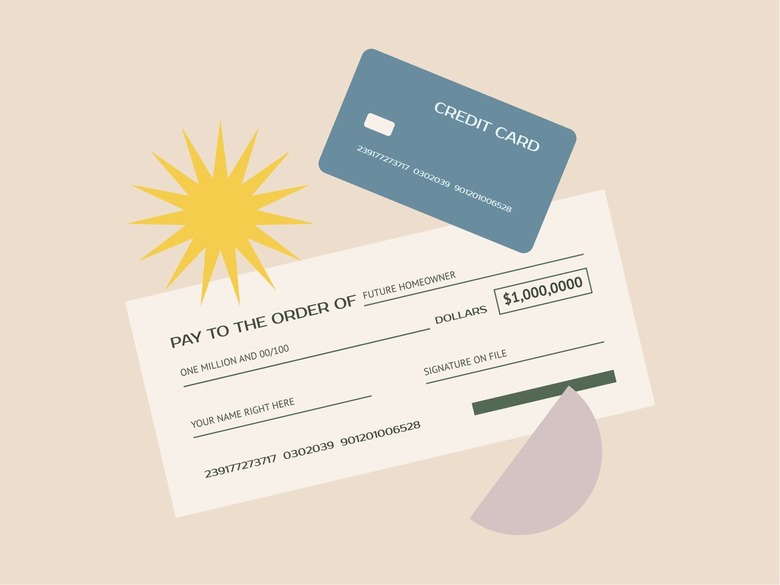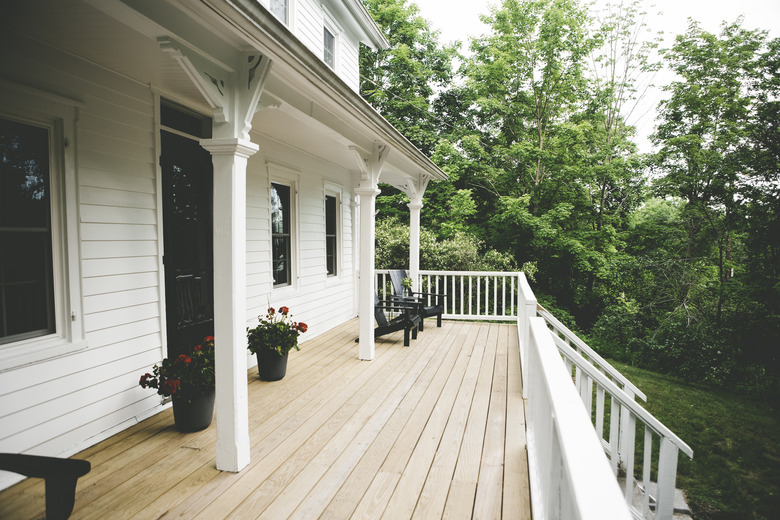The 8 Types Of Mortgage Loans — And How To Choose The Best One For You
For most first-time homebuyers, the purchase of real estate involves qualifying for a mortgage loan. The application process is challenging in and of itself, but it is further complicated by the fact that there are many different types of mortgages. The kind you select will affect your total loan cost as well as your monthly mortgage payments. Your best bet is to get an overview of the common mortgages available and the pros and cons of each before you go shopping for a mortgage loan.
The Basics of a Mortgage Loan
The Basics of a Mortgage Loan
Unless you are one of the lucky few who can afford to pay for a house in all cash, a first-time homebuyer generally needs a residential mortgage loan, which is a loan secured by the property being purchased. If the borrower defaults on the mortgage loan payments, the lender can foreclose on the house and sell it to clear the mortgage debt.
There are different types of mortgage loans, and they vary in more than a few ways. Some major differences include how interest is calculated, the amount of the mortgage and the identity of the lender. Government-backed mortgages have particular eligibility requirements, for example, but mortgage loans can be approved for people who have zero or low down payments.
One of the first decisions you'll need to make when choosing a home loan involves the loan term. The most popular residential mortgage periods are 30 years and 15 years, although it is possible to find mortgages for periods that are longer (40 years, for example) and shorter (five years, for example). With any loan, the general rule is the longer the payback period, the lower the monthly payments. However, lenders charge interest on the money they loan. While stretching out the loan term lowers the monthly payment, it increases the amount of interest the borrower will pay and thus the total cost of the loan.
1. Conventional Mortgage Loans
1. Conventional Mortgage Loans
A conventional mortgage is simply one that is not backed by the federal government and is instead serviced by private lenders, like banks and credit unions. Conventional mortgages are either conforming loans (loans that adhere to lending regulations that are set by federally backed mortgage companies called Fannie Mae and Freddie Mac) or nonconforming loans (those that do not).
The standard down payment amount for a conventional loan is 20 percent of the home selling price, but most first-time homebuyers put down much less. All major types of loans are available with a down payment of under 5 percent, but the right to a lower down payment comes with a price: private mortgage insurance.
A homebuyer with less than 20 percent down must buy private mortgage insurance (PMI) year after year until equity reaches 20 percent. The idea is to give the lender a cushion of equity on which to rely in case the buyer defaults. This PMI is calculated annually but is usually paid monthly, so it adds an amount to your monthly mortgage payment. Conventional mortgage insurance rates vary depending on the down payment amount and the borrower's credit score. Typical PMI premiums can range from $30 to $70 per month for every $100,000 borrowed.
2. Jumbo Mortgages
2. Jumbo Mortgages
Jumbo mortgages are those that are bigger than the guidelines set by Fannie Mae and Freddie Mac for conforming loans (or, the types of loans that conform to financing guidelines set by the Federal Housing Finance Agency). Both of these federally backed companies buy and guarantee conforming mortgages issued through lenders in the secondary mortgage market. In 2022, the conforming loan size limit for a home is $647,200, but it can be higher in certain high-priced markets. Loans exceeding these limits are called jumbo mortgages or nonconforming mortgages.
Lenders look at the same credit elements for a jumbo loan application as for a conforming loan, including credit score (at least 680), size of down payment, monthly debt obligations relative to income (debt-to-income ratio) and money left in reserve after closing. Jumbo lenders allow a higher debt-to-income ratio and may not mandate private mortgage insurance, but they will look for 12 months of money reserves after the close.
3. Federal Housing Administration Loans
3. Federal Housing Administration Loans
FHA loans are administered by the Federal Housing Administration. The FHA doesn't make the loans itself but insures approved lenders who issue the loans. This program was developed to assist those who would not qualify for conventional loans, and it offers some of the lowest interest rates of any loan type. An FHA loan can be had with a down payment of just 3.5 percent, and gifts from family are allowed as down payments. These are very popular mortgages for first-time homebuyers.
In addition to the low down payment, FHA loans allow borrowers with low credit scores — even 580 — to get loans. If your credit score is between 500 and 579, you can also get a loan if you come up with a 10 percent down payment. Keep in mind, however, that the lower your credit score, the higher the interest rate you are likely to be offered. You'll also need to show an employment history of two years of steady work. The loans are only available for primary residences.
The big downside to this loan is mortgage insurance. FHA loans require two kinds of mortgage insurance premiums. One is an upfront payment — 1.75 percent of the mortgage — that can be paid in cash or built into the mortgage. For example, if you have a $300,000 FHA loan, the upfront insurance payment of 1.75 percent will be $5,250. The other mortgage insurance amount — called mortgage insurance premium — is an annual premium paid monthly. The rate is a percentage of the loan amount based on several factors, including the borrower's loan-to-value ratio, the amount of the loan and the length of the loan.
4. Veterans' Administration Loans
4. Veterans' Administration Loans
A second common type of mortgage loan backed by the government is the VA loan, administered by the Veterans' Administration. The VA does not lend money directly but backs loans made by private lenders. Under this program, qualified applicants — current and former military personnel and some surviving spouses — are able to get a mortgage at a low rate with nothing down. In addition, they do not have to pay private mortgage insurance, which saves them more money, and the loans are assumable. There are no prepayment penalties on a VA loan, which means that if you pay off your mortgage early, you will not be charged a fee.
The biggest limiting factor of this program is that eligibility is restricted to military personnel, veterans or some surviving spouses. That includes active-duty military, military personnel who were honorably discharged, members of the reserves or the National Guard and spouses of service members killed in the line of duty.
5. United States Department of Agriculture Loans
5. United States Department of Agriculture Loans
If you aren't a veteran or a veteran's surviving spouse, the best mortgage loan rates available to you are in USDA loans, residential mortgages backed by the U.S. Department of Agriculture as part of its Rural Development Guaranteed Housing Loan program. This loan program targets homebuyers with low to average income for the area. It offers loans with nothing down, reduced mortgage insurance and below-market mortgage rates, some 0.5 to 0.75 percent lower than FHA loan programs and conventional loans.
This loan program was created to encourage home ownership and economic activity outside of major urban areas, so buyers in San Francisco or New York will have to look elsewhere. For a home purchase to be eligible for a USDA mortgage, both the homebuyer and the real estate must qualify. The home must be intended as a primary residence, and it must be located in a rural area as defined by the USDA, usually meaning a town with a population of less than 20,000. The buyer's income must not exceed 115 percent of the local median income, and the credit score should be at least 640.
The USDA offers protection to mortgage lenders in case a borrower defaults, but the USDA requires mortgage insurance to back up its guarantee. The insurance is based on the outstanding loan and requires a 1 percent upfront fee and a 0.35 percent annual fee (paid monthly).
6. Fixed-Rate Mortgages
6. Fixed-Rate Mortgages
Another major divide between mortgage loans is how the interest on it is calculated. Monthly mortgage payments include a pay down of principal (the amount you borrowed and are required to pay back) as well as an interest payment — with the exception of an interest-only mortgage, where the buyer pays back the interest first and then tackles the principal. The two common types of interest are fixed-rate and adjustable-rate mortgages. Each has its advantages.
In a fixed-rate mortgage, the interest is set at a particular rate that remains the same over the life of the loan. If the fixed interest rate is 3 percent when the loan is made, it remains 3 percent for the full loan term (unless, of course, the homeowner decides to refinance). This type of mortgage has a stable monthly payment on which the buyer can count.
7. Adjustable-Rate Mortgages
7. Adjustable-Rate Mortgages
An adjustable-rate mortgage (ARM) differs from a fixed-rate mortgage just like it sounds — the interest rate is adjustable throughout the life of the loan. In many cases, the initial interest rate of an ARM is set at a fixed rate below market rate, making the loan very attractive and affordable in the short term. However, when the rate is adjusted, the monthly payment can go up. Interest rates adjust over the life of the loan, so the borrower may face a steep rise in the payments. Of course, if interest rates drop, the payments can decrease.
8. Interest-Only Mortgages
8. Interest-Only Mortgages
Another variation on repayment terms is the interest-only mortgage. In this type of mortgage loan, the borrower only makes monthly interest payments (with no principal payments) for a set period of time, usually five, seven or 10 years. At the end of that period, the principal kicks in too, sometimes requiring higher payments that include both interest and principal and sometimes requiring a lump-sum payment.
The low monthly payments during the interest-only period make the loan attractive, but it's not smooth sailing for many homeowners. These types of loans got buyers into trouble during the housing bubble of the early 2000s. The buyers don't build up equity in the home until they start paying principal. Some buyers accept this type of loan planning to sell or refinance at the end of the interest-only period. Others save up during the interest-only period to make the principal lump-sum payment.


